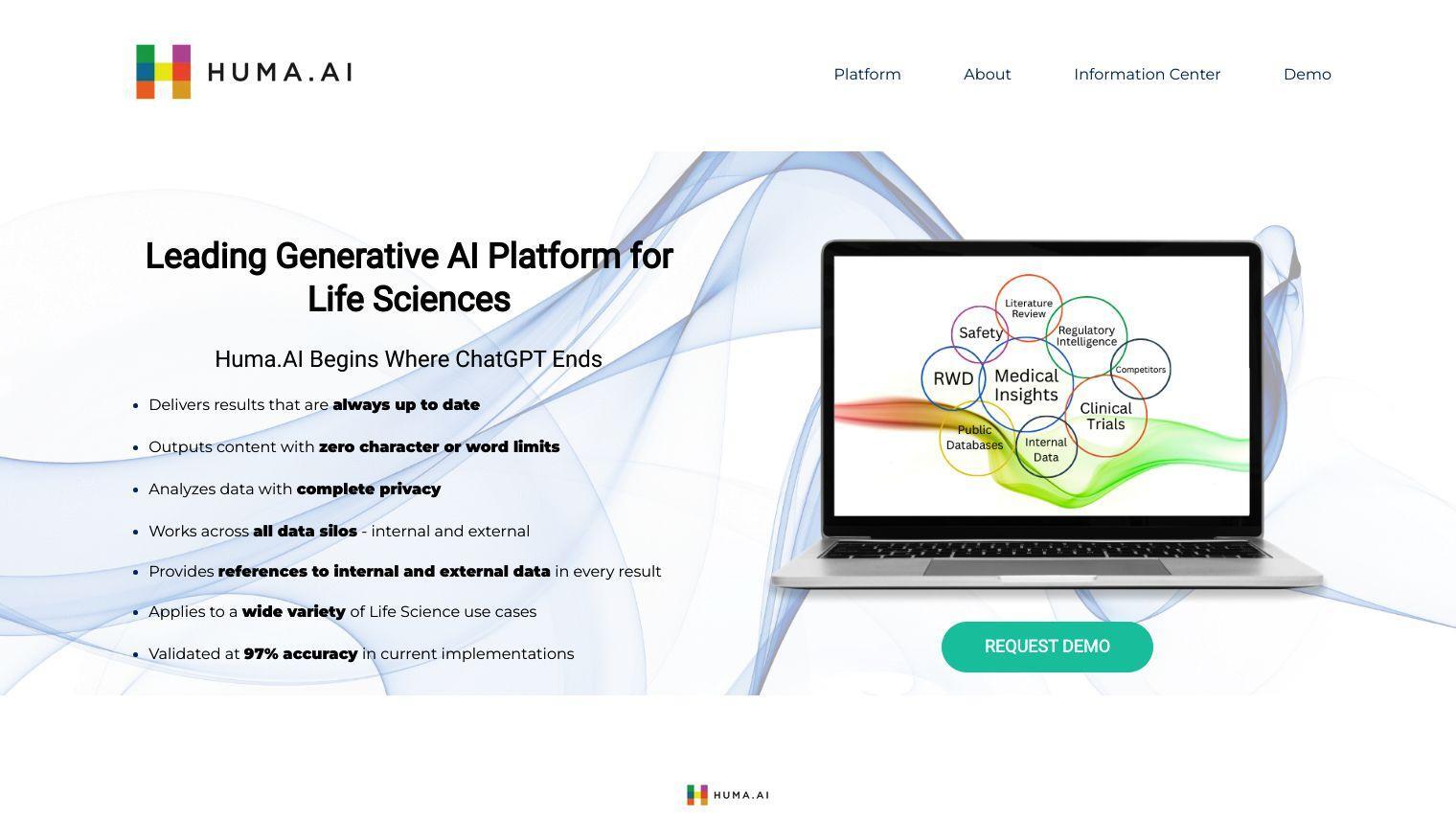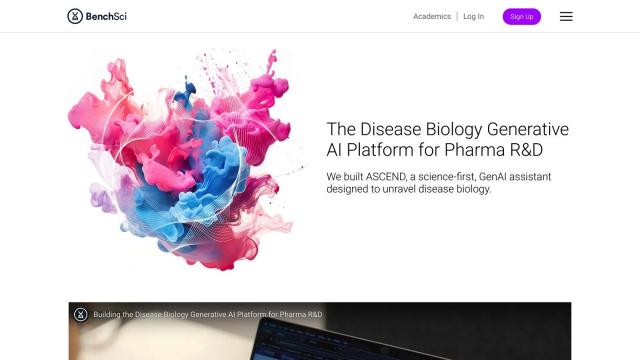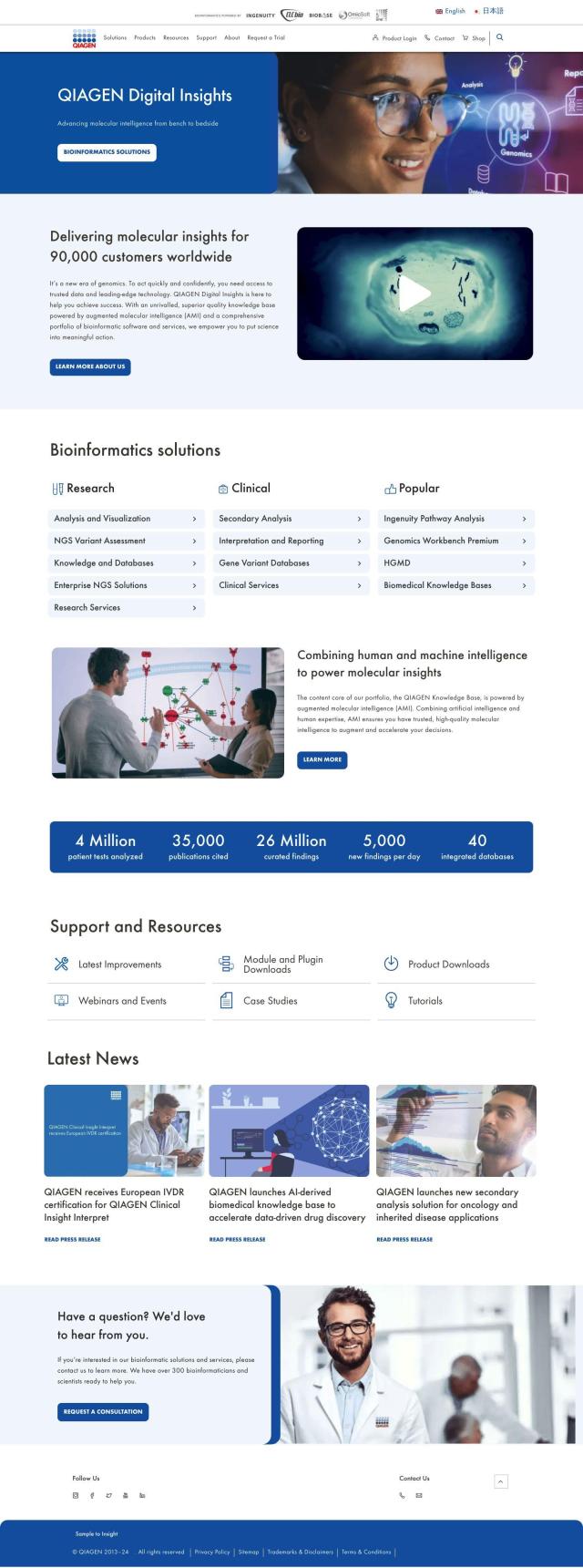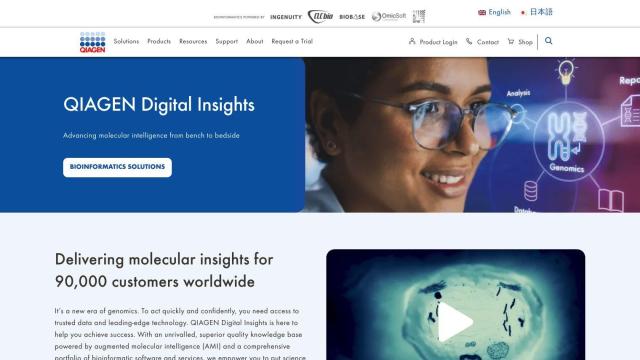Huma.AI is a generative AI platform built for the life sciences industry. It's geared for medical affairs, regulatory affairs and clinical development teams to process and interpret machine learning output. Results are always up to date, with no character or word limits, and data is analyzed privately. It can tap into internal and external data sources and offer references for every result.
Huma.AI tackles a number of life sciences challenges. For medical affairs teams, it can improve scientific exchange and KOL engagement with better data analysis, customer understanding and cross-functional collaboration. For clinical development, it can help understand the competitive trial landscape with visual insights, without the need to download and compare data from different sources. For real-world data analysis, it can streamline the process by combining insights from different departments so product changes can be made based on data.
Huma.AI also can automate post-market surveillance by curating relevant literature and performance data, so products can be evaluated more quickly for regulatory approval.
The company has validated its results at 97% accuracy in current uses and says customers are happy. For example, a Director of Digital Strategy and Innovation at a global oncology organization said Huma.AI "brings together internal and external data sources seamlessly." A former Global Head of Trial Monitoring at a major pharmaceutical manufacturer said the platform is "easy to use."
Huma.AI comes with a team of life science and IT experts to help customers along the way.
Huma.AI is designed to give life science professionals a data foundation for decision making, but in plain language. Pricing isn't disclosed, but you can request a demo to see the platform firsthand.
Huma.AI is geared for life sciences companies looking to use generative AI for medical affairs, clinical development, regulatory affairs and real-world data analysis. It's designed to provide insights that are easy to understand and act on.
Published on June 14, 2024
Related Questions
Tool Suggestions
Analyzing Huma.AI...







